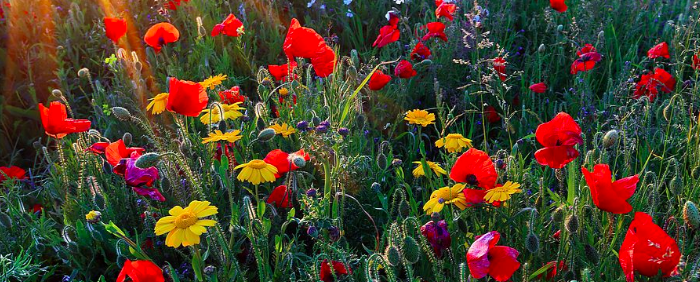
The third garden, kezako?
The third garden is simply to leave a part of the garden fallow – to abandon it to nature alone. How? Technically, simply by not putting your feet , or almost: we tell you more, a little lower on this same page. And what is this for ?
Biodiversity is in danger!
Everyone is aware today that biodiversity is in danger. In the last few days, the media has reported extensively on a 27-year study in Germany of 75% of flying insects in the country – and this only in protected natural areas. And in our gardens? It’s worse…
Biodiversity has also fled our gardens, simply because we are not making life easy . By dint of wanting to bend nature to our taste : a turf that occupies the largest part of the available surface, mowed too short and too often, hedges of a single species, not always local and most of which do not bear edible berries for birds, well-drawn flower beds, often weeded – when it’s not roundup! – limited species, the same besides, from garden to garden since bought in the same gardening …
We have simply excluded from our gardens lovingly maintained the cohort of insects, sometimes loosely desired, sometimes frankly undesirable – aphids, slugs, xylophages and coprophages – whose absolute necessity is now being measured. Not to mention other animals!
Now, how to contribute, at our small level, in our garden? You can make an insect hotel , it’s more fashionable, but if it is to put such a book in the middle of the lawn while continuing to mow flush each Saturday, frankly, it’s not worth it .
So how do you go about it?
Which surface to convert? There are no rules, even start with a small square meter , it’s good! In most cases, however, let some of the grass go to seed – say 10 or 20% of the surface is great! – at a place you do not need to access, or rarely. Put here and there some branches, even logs, a pile of dead leaves. Along a hedge is even better! And then, simply, do not worry about it anymore. You will see things grow surprisingly – look far enough! – and return insects fast enough!
It is also about accepting a less “clean” garden – an expression so common in our gardens, as if a garden were to be clean – but it is not a bathroom ! It’s an ecosystem, alive, evolving!
There you go. As a bonus, it’s always less work ! And we’re pretty fan of lazy gardening !
What can I win?
It’s good for the planet, good for diversity, but also for you and your garden! You will return insects, such as the carabe , which will regulate your slug populations (which are also necessary, should we say it again?), To raise aphids that will feast on ladybugs.
Where does this expression come from?
It imposes itself, and it is closer to the Third landscape of Gilles Clément – we have already spoken about including The Island Derborence, a voluntary third-landscape created by Gilles not far from us at Matisse Park in Lille.
A little salutary reminder:
The Third Landscape-the indecidated fragment of the Planetary Garden-refers to the sum of the spaces in which man abandons the evolution of the landscape to nature alone.
(…) Compared to all territories under the control and exploitation of man, the Third Landscape constitutes the privileged space of reception of the biological diversity. Cities, farms and forestry, sites dedicated to industry, tourism, human activity, the space of control and decision selects diversity and sometimes excludes it completely.The number of species found in a field, crop or managed forest is small compared to the number in an adjoining abode.
And “militate”, why?
Because it is urgent to act, and to change mentalities ! A healthy garden, with a maximum of insect species, but also of various plants – it is a big step forward! Say it around you, talk about it, you have to convince the neighbor, the grandfather, the friend!